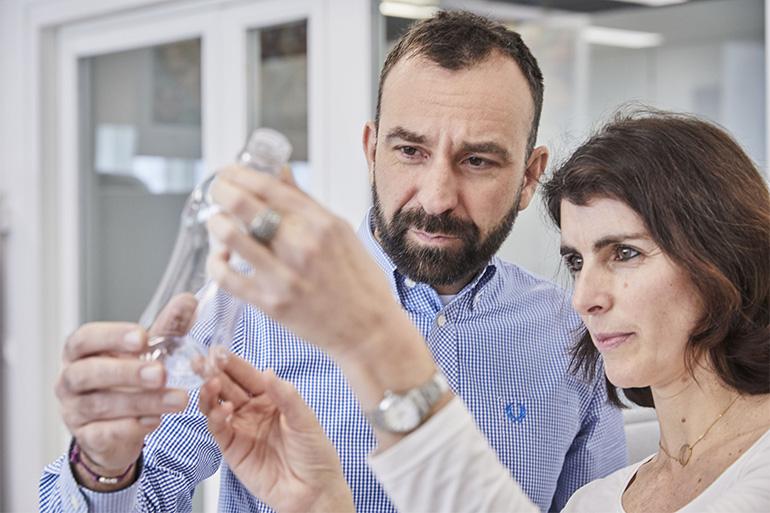Recycled plastic, circularity and sustainability projects in Nestlè’s current European approach
A meeting dedicated to printing took stock of the Group's strategies with interesting numbers on activities in Italy.

Nestlé has reached an important milestone in Italy with 97% of recycled packaging used by the brand, which is working on a series of projects conceived, among other things, to construct a uniform recycling system.
Reference can be made to the “Dove lo Butto?” (Where do I dispose of it)” (ItaliaImballaggio no. 7/8 2021) digital project promoted by the multinational to guide consumers of Nestlé products towards a correct disposal of packaging, which often changes from municipality to municipality.
At European level, where recycling percentages are on average less than Italian ones, the Nestlé Group is achieving similar results, with a significant 85% of recyclability for plastic packaging and a reduction of 14% of virgin plastic for its own packaging. These data show the role played by large operators, who can make the difference in the push towards the spread of green solutions and eco-design, to find the right balance for responding to packaging needs, shelf life, food safety and sustainability.
This is an approach which, in Italy, for Nestlé has led to particularly significant results: 97% of packaging produced in our country is, in fact, recyclable, with data that vary from material to material. Corrugated cardboard and glass, for example, are 100% recyclable, followed by paper at 98%, rigid plastic at 96%, closures with aluminium at 92% and flexible plastic at 77%.
Sustainable projects that involve the supply chain
In the last few years, the Group has intensified investments in Italy for the creation of circular economy initiatives and recycling systems, such as, for example, in the case of the initiative aimed at the collection of used coffee capsules called “Alleanza per il riciclo delle capsule in alluminio” (Alliance for the recycling of aluminium capsules). Launched in 2021 by Nespresso in partnership with Illycaffè, it has been further strengthened with the entrance into the project of Starbucks by Nespresso since 2023.
Consumers can therefore dispose of their used aluminium Starbucks by Nespresso, Nespresso and Illy capsules in the over 65 Nespresso Boutiques, in the 10 Illy Stores and in the more than 75 ecological islands in the scheme, for a total of over 150 collection points in the national territory. It’s a project which, from its launch in 2021 to today, has made it possible to recover over 3000 tonnes of capsules, favouring the recycling of aluminium and increasing the life-cycle of the capsule itself. There are also new developments in eco-design, with Starbucks by Nespresso that has launched on the market new capsules made with 80% recycled aluminium and composed of a finer sheet of aluminium, reducing by 9.2% the presence of aluminium in the packaging.
Circularity, from packaging to the food product
Again aimed at the coffee market, Nespresso’s “Da Chicco a Chicco” (From Bean-to-Bean) circular economy initiative directs the aluminium that makes up the capsules to foundries, in order to set up a recycling process that transforms the aluminium into new objects.
The residual coffee is, moreover, delivered to a composting plant for its transformation and subsequent use in an Italian rice paddy from which Nespresso repurchases the product to donate it to the Lombardy, Lazio and Piedmont Food Bank. Coffee once more, but this time regarding a high-consumption product such as the coffee pod, for the project that aims at creating an infrastructure for the collection, sorting and recycling of plastic coffee pods, set up in 2021 with Illy and the Friuli Venezia Giulia Region with the involvement of local multi-utility companies which, thanks to “Recap”, have collected 16 tonnes of plastic capsules, carrying out separability tests with the objective of developing a separation and recycling plant on an industrial scale for this type of waste material.

Eco-design driven by corporate policy
Finally, eco-design projects have also been set up in Italy by Nestlé brands for accelerating the Group’s sustainable packaging road map. In 2021, for example, Levissima launched in Italy the first bottle produced with 100% R-PET for the 1 litre and 75 cl still water reference products. The Nidina and NAN brands have adopted plastic lids and measuring cups produced for at least 66% from renewable vegetable sources (cane sugar), continuing to guarantee the food safety and quality of the product. In 2021, Smarties announced the passage to recyclable paper packaging for its main reference products throughout the world, involving more than 90% of the range.
The importance of exchange between industry and institutions
We will close this roundup of projects with some interesting reflections by Katja Seidenschnur, Nestlé’s Sustainability Director Europe who has pointed out how at a European and global level Nestlé has a codified LCA analysis system that guides all the choices of the Group. It’s a tool that makes it possible to accurately establish the carbon footprint, together with internal tools validated by third parties, which make it possible to measure, for example, the levels of greenhouse gas emissions. It is important to underline how the Group looks with interest at the recent decisions of the European Commission on packaging, hoping that, albeit with constant dialogue with the market, the legislator can participate with increasing determination in decisions linked to sustainability, in order to develop uniform policies strategies at European level.
Whether this relates to emissions, eco design, recycling and reuse, it’s necessary for there to be a constant dialogue between legislators and industry; an emblematic example is the management of the Italian recycling supply chain which, despite its effectiveness, still presents a territorial disorganization that reduces the potential for recovery and recycling. It is precisely on this question that the Nestlè Group projects are directed, constructing a shared path along the entire supply chain, from production to the shop shelf, in which the infrastructure and harmonisation of legislation can make the difference.



















